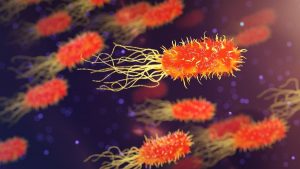Beyond gene-edited babies: the possible paths for tinkering with human evolution


At the Innovative Genomics Institute, a center established by Doudna in Berkeley, California, researchers anticipate that as delivery improves, they will be able to create a kind of CRISPR conveyor belt that, with a few clicks of a mouse, allows doctors to design gene-editing treatments for any serious inherited condition that afflicts children, including immune deficiencies so uncommon that no company will take them on. “This is the trend in my field. We can capitalize on human genetics quite quickly, and the scope of the editable human will rapidly expand,” says Urnov, who works at the institute. “We know that already, today—and forget 2124, this is in 2024—we can build enough CRISPR for the entire planet. I really, really think that [this idea of] gene editing in a syringe will grow. And as it does, we’re going to start to face very clearly the question of how we equitably distribute these resources.”
For now, gene-editing interventions are so complex and costly that only people in wealthy countries are receiving them. The first such therapy to get FDA approval, a treatment for sickle-cell disease, is priced at over $2 million and requires a lengthy hospital stay. Because it’s so difficult to administer, it’s not yet being offered in most of Africa, even though that is where sickle-cell disease is most common. Such disparities are now propelling efforts to greatly simplify gene editing, including a project jointly paid for by the Gates Foundation and the National Institutes of Health that aims to design “shot in the arm” CRISPR, potentially making cures scalable and “accessible to all.” A gene editor built along the lines of the covid-19 vaccine might cost only $1,000. The Gates Foundation sees the technology as a way to widely cure both sickle-cell and HIV—an “unmet need” in Africa, it says. To do that, the foundation is considering introducing into people’s bone marrow the exact HIV-defeating genetic change that He tried to install in embryos.
Then there’s the risk that gene terrorists, or governments, could change people’s DNA without their permission or knowledge.
Scientists can foresee great benefits ahead—even a “final frontier of molecular liberty,” as Christopher Mason, a “space geneticist” at Weill Cornell Medicine in New York, characterizes it. Mason works with newer types of gene editors that can turn genes on or off temporarily. He is using these in his lab to make cells resistant to radiation damage. The technology could be helpful to astronauts or, he says, for a weekend of “recreational genomics”—say, boosting your repair genes in preparation to visit the site of the Chernobyl power plant. The technique is “getting to be, I actually think it is, a euphoric application of genetic technologies,” says Mason. “We can say, hey, find a spot on the genome and flip a light switch on or off on any given gene to control its expression at a whim.”
Easy delivery of gene editors to adult bodies could give rise to policy questions just as urgent as the ones raised by the CRISPR babies. Whether we encourage genetic enhancement—in particular, free-market genome upgrades—is one of them. Several online health influencers have already been touting an unsanctioned gene therapy, offered in Honduras, that its creators claim increases muscle mass. Another risk: If changing people’s DNA gets easy enough, gene terrorists or governments could do it without their permission or knowledge. One genetic treatment for a skin disease, approved in the US last year, is formulated as a cream—the first rub-on gene therapy (though not a gene editor).
Some scientists believe new delivery tools should be kept purposefully complex and cumbersome, so that only experts can use them—a biological version of “security through obscurity.” But that’s not likely to happen. “Building a gene editor to make these changes is no longer, you know, the kind of technology that’s in the realm of 100 people who can do it. This is out there,” says Urnov. “And as delivery improves, I don’t know how we will be able to regulate that.”

MICHAEL BYERS
In our conversation, Urnov frequently returned to that list of superpowers—genetic variants that make some people outliers in one way or another. There is a mutation that allows people to get by on five hours of sleep a night, with no ill effects. There is a woman in Scotland whose genetic peculiarity means she feels no pain and is perpetually happy, though also forgetful. Then there is Eero Mäntyranta, the cross-country ski champion who won three medals at the 1964 Winter Olympics and who turned out to have an inordinate number of red blood cells thanks to an alteration in a gene called the EPO receptor. It’s basically a blueprint for anyone seeking to join the Enhanced Games, the libertarian plan for a pro-doping international sports competition that critics call “borderline criminal” but which has the backing of billionaire Peter Thiel, among others.
All these are possibilities for the future of the human genome, and we won’t even necessarily need to change embryos to get there. Some researchers even expect that with some yet-to-be-conceived technology, updating a person’s DNA could become as simple as sending a document via Wi-Fi, with today’s viruses or nanoparticles becoming anachronisms like floppy disks. I asked Church for his prediction about where gene-editing technology is going in the long term. “Eventually you’d get shot up with a whole bunch of things when you’re born, or it could even be introduced during pregnancy,” he said. “You’d have all the advantages without the disadvantages of being stuck with heritable changes.”
And that will be evolution too.



